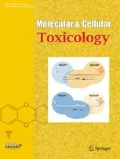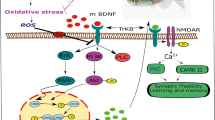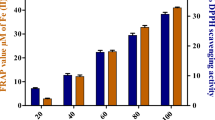Abstract
Alisma Rhizome is a known tradition medication, which has been used for its diuretic, hypolipidemic, anti-diabetic, and anti-inflammatory purposes for thousands of years. The primary compounds of Alisma Rhizome are protostane type triterpenes, such as Alisols A, B or C. We previously demonstrated that Alisol derivatives (Alisols A, B, and C) have inhibitory effects on 5-hydroxytryptamine 3A (5-HT3A) currents1. In this study, we tested the effects of a new triterpene, Alisol-F, on human 5-HT3A and α3β4 nicotinic acetylcholine (nACh) receptor channel currents by using Xenopus oocytes expressing these channels. Co-application of Alisol-F inhibited 5-HT3A and α3β4 nACh receptor-mediated inward peak currents. The inhibitory effect of Alisol-F on 5-HT and ACh-induced inward peak currents occurred in a reversible and concentration- dependent manner. The half maximal inhibitory concentrations (IC50) of Alisol-F were 79.4 ± 11.0 and 21.2 ±6.0 μM for the 5-HT3A and α3β4 nACh receptors, respectively. In addition, the inhibition of I 5-HT and I ACh by Alisol-F occurred noncompetitive and voltage insensitive manner. Taken together, these results show that Alisol-F may regulate 5-HT3A and α3β4 nACh receptors channel expressed in Xenopus oocytes.
Similar content being viewed by others
References
Lee, J. H. et al. Effects of protostane-type triterpenoids on the 5-HT3A receptor-mediated ion current in Xenopus oocytes. Brain Res 1331:20–27 (2010).
Ortells, M. O. & Lunt, G. G. Evolutionary history of the ligand-gated ion-channel superfamily of receptors. Trends Neurosci 18:121–127 (1995).
Solt, K., Ruesch, D., Forman, S. A., Davies, P. A. & Raines, D. E. Differential effects of serotonin and dopamine on human 5-HT3A receptor kinetics: interpretation within an allosteric kinetic model. J Neurosci 27:13151–13160 (2007).
Lee, B. H. et al. Identification of ginsenoside interaction sites in 5-HT3A receptors. Neuropharmacology 52:1139–1150 (2007).
Dang, H., England, P. M., Farivar, S. S., Dougherty, D. A. & Lester, H. A. Probing the role of a conserved M1 proline residue in 5-hydroxytryptamine(3) receptor gating. Mol Pharmacol 57:1114–1122 (2000).
Lopreato, G. F., Banerjee, P. & Mihic, S. J. Amino acids in transmembrane domain two influence anesthetic enhancement of serotonin-3A receptor function. Brain Res Mol Brain Res 118:45–51 (2003).
Zhang, L. et al. Distinct molecular basis for differential sensitivity of the serotonin type 3A receptor to ethanol in the absence and presence of agonist. J Biol Chem 277:46256–46264 (2002).
Hu, X. Q., Zhang, L., Stewart, R. R. & Weight, F. F. Arginine 222 in the pre-transmembrane domain 1 of 5-HT3A receptors links agonist binding to channel gating. J Biol Chem 278:46583–46589 (2003).
Keramidas, A., Moorhouse, A. J., Schofield, P. R. & Barry, P. H. Ligand-gated ion channels: mechanisms underlying ion selectivity. Prog Biophys Mol Biol 86:161–204 (2004).
Lummis, S. C. The transmembrane domain of the 5-HT3 receptor: its role in selectivity and gating. Biochem Soc Trans 32:535–539 (2004).
Lee, B. H. et al. Quinazolindione derivatives as potent 5-HT3A receptor antagonists. Bioorg Med Chem 17:4793–4796 (2009).
Sargent, P. B. The diversity of neuronal nicotinic acetylcholine receptors. Annu Rev Neurosci 16:403–443 (1993).
Lee, J. H. et al. Effects of dextrorotatory morphinans on alpha3beta4 nicotinic acetylcholine receptors expressed in Xenopus oocytes. Eur J Pharmacol 536:85–92 (2006).
Kubo, M., Matsuda, H., Tomohiro, N. & Yoshikawa, M. Studies on Alismatis rhizoma. I. Anti-allergic effects of methanol extract and six terpene components from Alismatis rhizoma (dried rhizome of Alisma orientale). Biol Pharm Bull 20:511–516 (1997).
Makabel, B. et al. Stability and structure studies on alisol a 24-acetate. Chem Pharm Bull 56:41–45 (2008).
Imai, Y., Matsumura, H. & Aramaki, Y. Hypocholesterolemic effect of alisol A-24-monoacetate and its related compounds in rats. Jpn J Pharmacol 20:222–228 (1970).
Xu, W. et al. Anti-proliferative activities of terpenoids isolated from Alisma orientalis and their structure-activity relationships. Anticancer Agents Med Chem 15:228–235 (2015).
Mai, Z. P. et al. Protostane Triterpenoids from the Rhizome of Alisma orientale Exhibit Inhibitory Effects on Human Carboxylesterase 2. J Nat Prod 78:2372–2380 (2015).
Jin, H. G. et al. A new triterpenoid from Alisma orientale and their antibacterial effect. Arch Pharm Res 35:1919–1926 (2012).
Van Hooft, J. A. & Vijverberg, H. P. RS-056812-198: partial agonist on native and antagonist on cloned 5-HT3 receptors. Euro J Pharmacol 322:229–233 (1997).
Zhong, H., Zhang, M. & Nurse, C. A. Electrophysiological characterization of 5-HT receptors on rat petrosal neurons in dissociated cell culture. Brain Res 816:544–553 (1999).
Zhou, X. et al. Pharmacological properties of nicotinic acetylcholine receptors expressed by guinea pig small intestinal myenteric neurons. J Pharmacol Exp Ther 302:889–897 (2002).
Campos-Caro, A. et al. Neuronal nicotinic acetylcholine receptors on bovine chromaffin cells: cloning, expression, and genomic organization of receptor subunits. J Neurochem 68:488–497 (1997).
Perry, D. C. et al. Measuring nicotinic receptors with characteristics of alpha4beta2, alpha3beta2 and alpha-3beta4 subtypes in rat tissues by autoradiography. J Neurochem 82:468–481 (2002).
Whiteaker, P. et al. Involvement of the alpha3 subunit in central nicotinic binding populations. J Neurosci 22:2522–2529 (2002).
Maisonneuve, I. M. & Glick, S. D. Anti-addictive actions of an iboga alkaloid congener: a novel mechanism for a novel treatment. Pharmacol Biochem Behav 75:607–618 (2003).
Mulle, C., Vidal, C., Benoit, P. & Changeux, J. P. Existence of different subtypes of nicotinic acetylcholine receptors in the rat habenulo-interpeduncular system. J Neurosci 11:2588–2597 (1991).
Quick, M. W., Ceballos, R. M., Kasten, M., McIntosh, J. M. & Lester, R. A. Alpha3beta4 subunit-containing nicotinic receptors dominate function in rat medial habenula neurons. Neuropharmacology 38:769–783 (1999).
Sheffield, E. B., Quick, M. W. & Lester, R. A. Nicotinic acetylcholine receptor subunit mRNA expression and channel function in medial habenula neurons. Neuropharmacology 39:2591–2603 (2000).
Barnes, J. M. et al. Identification and distribution of 5-HT3 recognition sites within the human brainstem. Neurosci Lett 111:80–86 (1990).
Stewart, D. J. Cancer therapy, vomiting, and antiemetics. Can J Physiol Pharm 68:304–313 (1990).
Jackson, M. B. & Yakel, J. L. The 5-HT3 receptor channel. Annu Rev Physiol 57:447–468 (1995).
Farber, L., Haus, U., Spath, M. & Drechsler, S. Physiology and pathophysiology of the 5-HT3 receptor. Scand J Rheumatol 119, 2–8 (2004).
Haus, U., Spath, M. & Farber, L. Spectrum of use and tolerability of 5-HT3 receptor antagonists. Scand J Rheumatol 119, 12–18 (2004).
Youn, U. J. et al. Regulation of the 5-HT3A receptormediated current by alkyl 4-hydroxybenzoates isolated from the seeds of Nelumbo nucifera. Chem Biodivers 7:2296–2302 (2010).
Haghighi, A. P. & Cooper, E. A molecular link between inward rectification and calcium permeability of neuronal nicotinic acetylcholine alpha3beta4 and alpha4beta2 receptors. J Neurosci 20:529–541 (2000).
Herrero, C. J., Garcia-Palomero, E., Pintado, A. J., Garcia, A. G. & Montiel, C. Differential blockade of rat alpha3beta4 and alpha7 neuronal nicotinic receptors by omega-conotoxin MVIIC, omega-conotoxin GVIA and diltiazem. Br J Pharmacol 127:1375–1387 (1999).
Kindler, C. H., Verotta, D., Gray, A. T., Gropper, M. A. & Yost, C. S. Additive inhibition of nicotinic acetylcholine receptors by corticosteroids and the neuromuscular blocking drug vecuronium. Anesthesiology 92:821–832 (2000).
Jiang, Z. Y. et al. A new triterpene and anti-hepatitis B virus active compounds from Alisma orientalis. Planta Medica 72:951–954 (2006).
Lee, S. M. et al. Anti-complementary activity of protostane-type triterpenes from Alismatis rhizoma. Arch Pharm Res 26:463–465 (2003).
Matsuda, H. et al. Effects of sesquiterpenes and triterpenes from the rhizome of Alisma orientale on nitric oxide production in lipopolysaccharide-activated macrophages: absolute stereostructures of alismaketones-B 23-acetate and -C 23-acetate. Bioorg Med Chem Lett 9:3081–3086 (1999).
Matsuda, H., Tomohiro, N., Yoshikawa, M. & Kubo, M. Studies on Alismatis Rhizoma. II. Anti-complementary activities of methanol extract and terpene components from Alismatis Rhizoma (dried rhizome of Alisma orientale). Biol Pharm Bull 21:1317–1321 (1998).
Zhang, Q. et al. Anti-HBV agents. Part 1: Synthesis of alisol A derivatives: a new class of hepatitis B virus inhibitors. Bioorg Med Chem Lett 18:4647–4650 (2008).
Chen, H. W., Hsu, M. J., Chien, C. T. & Huang, H. C. Effect of alisol B acetate, a plant triterpene, on apoptosis in vascular smooth muscle cells and lymphocytes. Euro J Pharmacol 419:127–138 (2001).
Chou, C. C., Pan, S. L., Teng, C. M. & Guh, J. H. Pharmacological evaluation of several major ingredients of Chinese herbal medicines in human hepatoma Hep3B cells. Eur J Pharm Sci 19:403–412 (2003).
Lee, J. H. et al. Ginsenoside Rg3 inhibits human Kv1.4 channel currents by interacting with the Lys531 residue. Mol Pharmacol 73:619–626 (2008).
Author information
Authors and Affiliations
Corresponding authors
Rights and permissions
About this article
Cite this article
Yeom, H.D., Kim, YM., Lee, S.B. et al. Effects of triterpenoid Alisol-F on human 5-hydroxytryptamine 3A and α3β4 nicotinic acetylcholine receptor channel activity. Mol. Cell. Toxicol. 13, 271–278 (2017). https://doi.org/10.1007/s13273-017-0030-9
Received:
Accepted:
Published:
Issue Date:
DOI: https://doi.org/10.1007/s13273-017-0030-9




